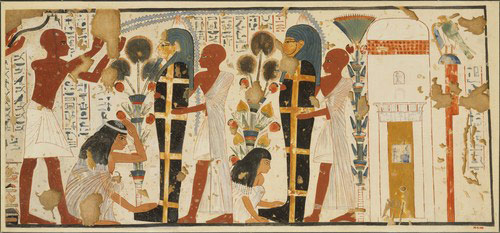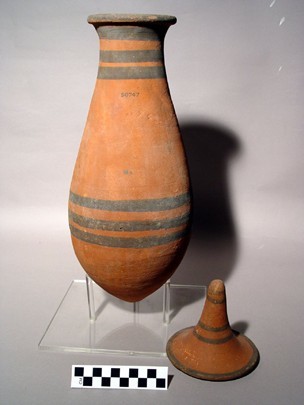18th Century Vase
This artifact is a ceramic vase found in the ninth tomb of the Theban Necropolis. These vases served a very important role in dating all the tombs in this necropolis. The book “Holocene Fluvial History of the Nile’s West Bank at Ancient Thebes, Luxor, Egypt and its relationship with cultural dynamics and basin-wide hydroclimatic variability” goes over the theory that there used to be a channel of the Nile that in a sense circled the city of Thebes and the necropolis instead of just passing through it as it still does today. Modern archeologists have utilized their access to this abundance of ceramics found in and around the necropolis to be able to date when they were made in order to calculate the theory if there was a river located there at the time. The reason the pottery may be able to contribute is that during that age pottery was incorporated in the rituals and religious ceremonies that also would have included that the pottery. Researchers were able to estimate a time frame that each of the vases or other ceramic artifacts were made and determine if it was a river current that would place these objects where they were found. They were able to confirm that there was, in fact, a channel of water that branched out at one point that during burial rituals pottery such as this vase would be lost in the waters of the river and would be recovered thousands of year after the river channel became nonexistent.
Citations:
Toonen W. H. J., Graham A., Pennington B. T., et al. Holocene fluvial history of the Nile's west bank at ancient Thebes, Luxor, Egypt, and its relation with cultural dynamics and basin‐wide hydroclimatic variability. Geoarchaeology. 2018;33:273–290.

